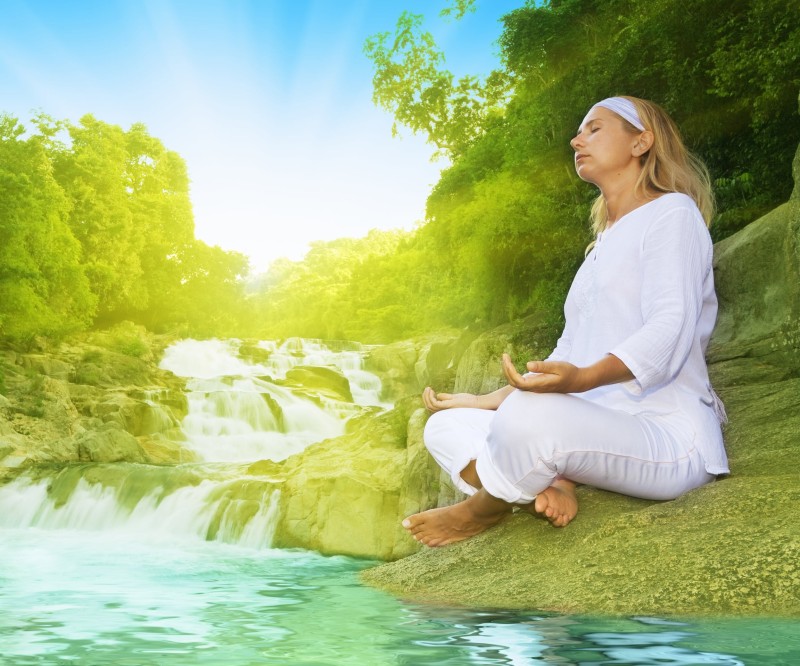Turn Within & Create Stillness
This writing focuses on starting a meditation practice. When we meditate, we turn within and create stillness. We become a clear vessel for spiritual energy to enter and influence our being. The universe is always trying to communicate with us. It does so through sensations, images, thoughts, emotions, and urgings. As we fully attune to and become one with the universal spiritual energy, we allow new qualities of our being to emerge. To do this we need a nurturing atmosphere and careful attention, much like new seedlings that thrive in the protective environment of a greenhouse.
In Edgar Cayce’s words, “It’s like arranging a house to become a channel of solar energy, so that when the sun shines, it warms the home. Meditation is a way of aligning our mind so that we are completely receptive to the energy of our ideal.” Cayce also describes how meditation allows us to interact with the energy of creative, aligning every cell of our body with that energy. As the energy touches us, it influences us at a cellular level, helping us to embody the divine.
There are two directions in meditation – upward and downward. Upward meditation is transcendental and turns attention to the abstract and infinite, opening the consciousness. While upward meditation transcends the body, downward meditation works through the body. Both directions are useful, but the downward is more practical in helping to bring the divine ideals into our bodies and lives. This transforms us from the inside out.
Our intention is transformation. Meditation is the means to accomplish it. To quote Marion Woodman from her audiotape, Sitting at the Well:
“We are moving into a new paradigm, leaving the old structures behind. Where do we go for our guidance? I suggest to you that we have no place but our own well. We all have this well inside.
Starting a Practice:
The repetition of meditation in the same spot every day will energetically transform the spot into a sacred space.
Posture:
You can use a pillow, a bench, or a chair. You can sit with flat feet or cross-legged. A straight spine is a channel for energy, much like an antenna.
Invocation:
The purpose of an invocation is to align yourself with the highest possible vibration; for example, with a divine ideal, such as love, peace, or freedom. An example of an invocation is: “I am the universe. The universe is in my body. The universe and I combine together. I invoke all Enlightened beings to inspire and guide me in fulfilling my life’s purpose.” Choose words that are meaningful to you, and use the same invocation each time you meditate to establish your own ritual.
A Downward Practice
The downward practice that we will describe begins with the breath and uses the breath to focus attention on the pulse. This is a modified version of the Heart Rhythm Meditation practice developed by Puran Bair.
Begin by assuming a comfortable meditation posture. Close your eyes. Gently become aware of your breath as you continue to breathe normally for a few minutes.
Then begin to consciously direct your attention to each exhalation. Exhale as you usually do, but at the end, extend the exhalation for three seconds longer, fully emptying your lungs and squeezing the expiratory muscles of your abdominal wall. Do not hold your breath at the end. Imagine yourself diving to the bottom of a pool, pushing yourself to reach the very bottom and then using the momentum of hitting the bottom to propel yourself back up. After you exhale completely, the next inhalation will “rush in.” Become comfortable with full exhalation until you can experience emptying your lungs completely for ten breaths. There are two reasons for full exhalation. The first is to get the benefit of the full inhalation that follows. The second is that a deep exhalation moves the heart more than usual. For the next five breaths, keep your concentration on the full exhalation and begin to notice your heart. Do this with an attitude of tenderness. Notice the emotion in your heart on both the exhalation and the inhalation.
Next, focus on the inhalation. At the top of the inhalation, hold your breath and become aware of the effect of the beating of your heart, which you usually feel first as a pulsation somewhere in your body. Notice where you feel the pulse because this is important information from your unconscious. It could be in your fingertips, hands, temples, ears, stomach, or anywhere else in your body. Consider why you are feeling it where you are. What attention does it need from you? What memories are stored there? What advice does it have for you?
If you do not notice a pulse, hold the inhale a little longer to intensify the sensation. Follow this with a full exhale. With practice your pulse will become more pronounced and easier to find. In the next issue we will describe a method of following the pulse to go deeper into the sensations and emotions of the heart.
Further readings Edgar Cayce. On Channeling Your Higher Self by Henry Reed. Living from the Heart by Puran Bair.
Cindy Yasmine

